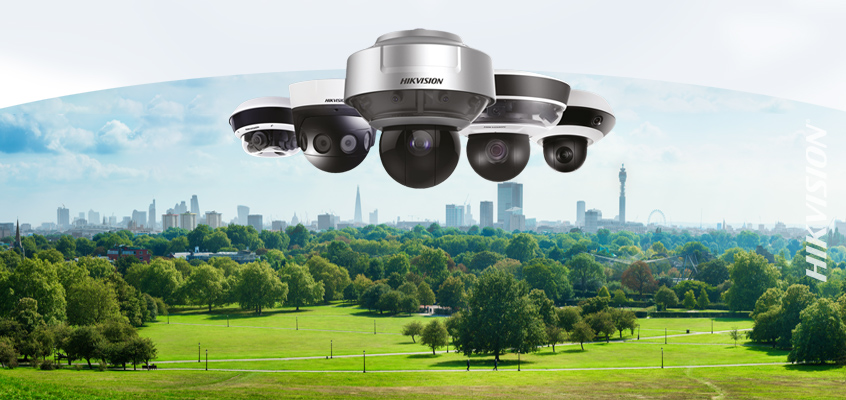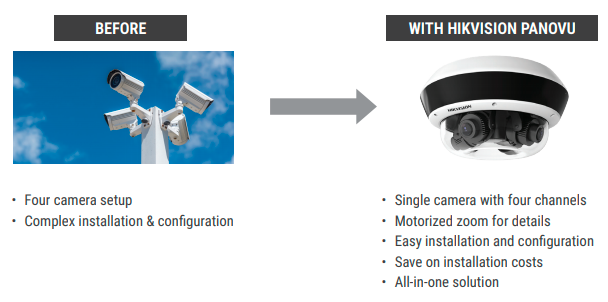La nouvelle brochure détaille la gamme panoramique multicapteurs PanoVu de Hikvision - Une seule caméra pour une couverture HD à 360 degrés, les modèles PTZ améliorent la précision des détails

Les caméras réseau panoramiques PanoVu de Hikvision offrent une excellente solution : une caméra offrant une couverture panoramique étendue. Nous sommes heureux de vous présenter la nouvelle brochure, désormais disponible en téléchargement sur notre site Internet, qui présente cette gamme de caméras panoramiques.
Les caméras réseau panoramiques PanoVu de Hikvision fournissent des solutions panoramiques multicapteurs qui surmontent les limites des caméras de sécurité traditionnelles. Nos caméras PanoVu à 180 degrés et 360 degrés avec PTZ peuvent offrir une couverture étendue et un zoom sur des détails précis, le tout avec une seule caméra. Plusieurs capteurs capturent des images panoramiques en résolution ultra-HD.

La famille de produits PanoVu comprend des caméras à vue panoramique haute définition jusqu'à 32 Mpx. Il fournit également un éclairage infrarouge et panoramique supplémentaire pour des images claires dans des environnements extrêmement sombres et un angle d'inclinaison large. Cette gamme de caméras intègre également la technologie de compression vidéo H.265 + pour une transmission et un stockage vidéo efficaces.
Les fonctionnalités supplémentaires de PanoVu incluent :
• Caméra unique avec quatre canaux
• Zoom motorisé pour plus de détails
• Installation et configuration facile
• Solution tout-en-un
Consultez la brochure pour en savoir plus sur cette gamme de caméras panoramiques riches en fonctionnalités.
